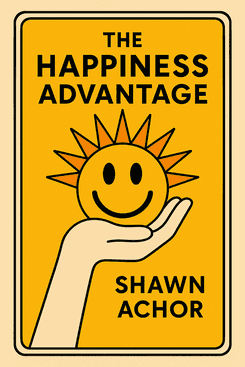What is
The Surprising Secrets of Highly Happy Marriages about?
The Surprising Secrets of Highly Happy Marriages reveals 12 researched-backed habits that distinguish blissful marriages, based on Shaunti Feldhahn’s three-year study of 1,000 couples. Unlike generic advice, it focuses on counterintuitive actions like “going to bed mad” or “keeping score” to transform relationships from functional to deeply fulfilling. The book blends data-driven insights with relatable examples for practical application.
Who should read
The Surprising Secrets of Highly Happy Marriages?
This book is ideal for married couples at any stage, pre-marital pairs, or counselors seeking science-based strategies. It’s particularly valuable for those feeling “stuck” in a “good enough” marriage who want actionable steps toward greater satisfaction. Feldhahn’s accessible style also appeals to readers who prefer research over anecdotal advice.
Is
The Surprising Secrets of Highly Happy Marriages worth reading?
Yes—readers praise its unique blend of academic rigor (1,000-couple study) and relatable takeaways, like prioritizing small, consistent gestures over grand gestures. It’s recommended by The New York Times and marriage therapists for its focus on replicable habits rather than abstract theories. Over 90% of reviewers report actionable improvements.
What qualifications does Shaunti Feldhahn have to write this book?
Shaunti Feldhahn holds a Harvard master’s degree in public policy and worked as a Wall Street analyst before becoming a bestselling relationship researcher. She’s authored 12 books, including For Women Only (2M+ copies sold), and her work is cited in major media like Cosmopolitan and Focus on the Family.
What are the 12 habits of highly happy marriages?
Key habits include reframing conflicts (“going to bed mad” to avoid escalation), practicing gratitude (“keeping score” of positives), and fostering “factual fantasies” about partners. These counterintuitive strategies are derived from behaviors observed in the top 10% of surveyed couples.
How does this book differ from other marriage guides like
The 5 Love Languages?
While The 5 Love Languages focuses on emotional needs, Feldhahn’s work emphasizes actionable micro-habits—like intentional praise or managing emotions—that build compounding intimacy. It’s more tactical (e.g., “boss your feelings around”) versus conceptual, making it complementary to broader relationship frameworks.
What is the most surprising secret in the book?
Contrary to popular advice, Feldhahn found highly happy couples often “go to bed mad” to avoid nighttime escalation, then resolve conflicts calmly the next day. Another surprise: they actively curate positive perceptions of their partner (“factual fantasies”), ignoring minor annoyances.
Does the book address financial conflicts in marriage?
While not its primary focus, habit #7 (“Get in over their heads”) discusses aligning on shared goals—including financial ones—to build teamwork. Feldhahn’s Wall Street background informs data-driven tips for collaborative budgeting.
Can these principles help unmarried couples?
Absolutely. The habits—like intentional communication and managing expectations—apply to any committed relationship. Therapists often recommend it for pre-marital counseling due to its preventive strategies.
What criticism has the book received?
Some critics argue the 12 habits oversimplify complex relationships, though supporters counter that the specificity makes it implementable. A small percentage of readers wanted more diversity in case studies beyond the 1,000 surveyed couples.
How does this book compare to Feldhahn’s
For Women Only?
For Women Only explains male psychology, while Secrets offers mutual relationship strategies. They’re frequently paired—73% of readers buy both for complementary gender-specific and joint-action insights.
Are there discussion questions or worksheets included?
Yes. Each chapter includes “Try This” exercises, like tracking daily affirmations or reframing a recurring argument. Groups and therapists often use these for guided practice.














